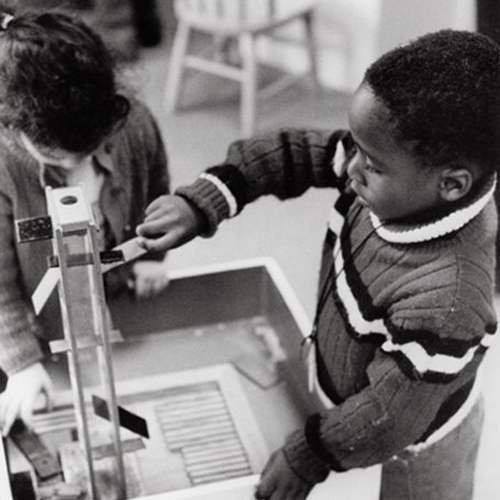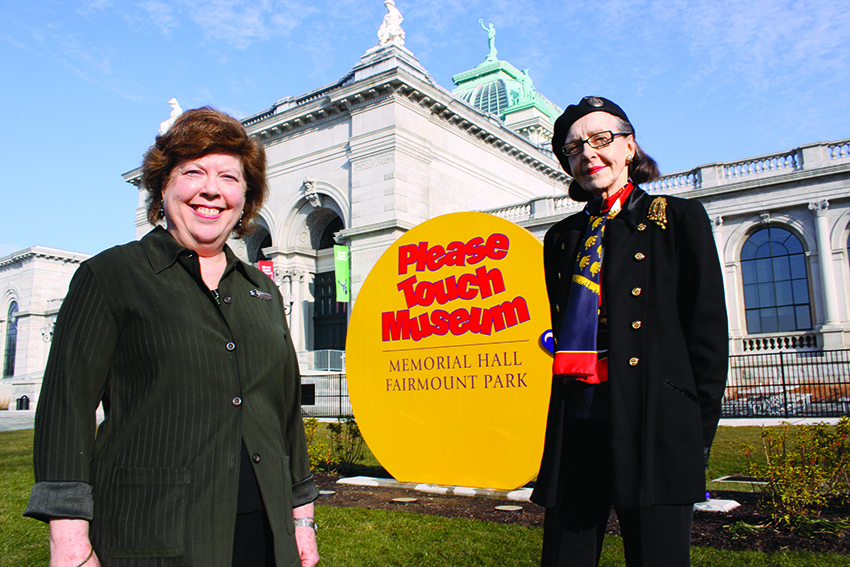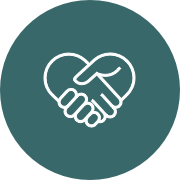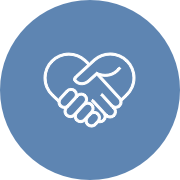
‘Idealism and reality put together’
When the Please Touch Museum opened in Philadelphia in 1976 as a fledgling program of Resources for Human Development, it was immediately apparent that what began as something typical at RHD – an “out of the box” idea getting a chance to become reality – was about to become a very atypical success.
“We did some publicity; not too much, because we didn’t have a lot of room,’’ said Portia Sperr, who founded Please Touch with the help of RHD in 1976. “The opening weekend, we had a problem. We had too many people. We had to take them in groups, where they could come in for a half hour or 45 minutes, and then we had to move them out and let other people in. We had lines stretching out the door. And suddenly there was a problem we didn’t know we’d have – people were coming up to me and saying: If I give you $20, can you let my daughter get through this line?
“When people were trying to bribe us to get into our museum, that’s when I thought we might have something big, here.”
Today the Please Touch Museum is one of the premier children’s museums in the country, having absolutely changed the landscape of the museum industry in Philadelphia. It is an iconic landmark in the city, and after almost constant expansion and staggering growth Please Touch has found a home in beautifully-renovated Memorial Hall, where it welcomes about half a million visitors each year.
Recently Sperr was kind enough to dig through the archives in her office, finding notes and memos from the early days of Please Touch. From a folder Sperr pulls the minutes of the original meeting – July 24, 1975 – to discuss the idea of a children’s museum. Bob Fishman, then RHD’s CEO, was one of the people at that meeting. Sperr had been friends with Bob and Barbara Fishman, as well as Mary Anne Hunter at Resources for Human Development, from her time at the Montessori School (the Fishmans were working as consultants and therapists for special needs families at the school).
“When I was a Montessori School teacher, I took children to museums when they were four or five years old, and I always felt that museums weren’t doing anything for children that young,’’ Sperr said. “And I thought we really ought to have something for younger children.
“We started getting a group together to see what we could do. And Bob got interested in taking us on as a unit at Resources. Almost everything Resources was doing was human services, and this was a step into something cultural. But Bob was very interested; he always saw Resources as an incubator for good ideas.”
They settled on a name (the original idea, “Keep In Touch,” was taken), hashed out a budget, and with the assistance of RHD gained nonprofit status and help in preparing requests for foundation support.
“I remember Mary Anne Hunter and I sat right here in front of this fireplace, doing budgets, thinking that maybe by 1980 we could be self-sufficient,’’ Sperr said. “And we thought: Oh, if only. Our original projected budget was $60,000 and we thought that was pie in the sky, just an incredible thing. I mean, who could have imagined? Five months later, we were part of RHD.”
“Please Touch, a hands-on museum for children” debuted in 1976 at the Academy of Natural Sciences. Its initial proposals for funding touted a relationship with RHD, noting the corporation’s “six-year history of sponsorship of a variety of human service programs.”
“The wonderful thing about Resources was that is was such a protector,” Sperr said. “We could never spend over our budget. Coming from a family of thrifty Scots, that thinking really appealed to me. We were growing so fast, and there was some temptation from our original board to over-extend ourselves in some odd directions, and I was always able to say: ‘Well, Resources. I can’t do it.’ They never let us get looped into expenses that might have gotten out of hand. Bob was very businesslike, and had such a good reputation with the foundation people. Being with Resources gave us solidity and credibility in our early days, when we really needed it.”
Even with limited space, Please Touch set aside room for special needs kids, perhaps a nod to being an RHD program.
“We got a call from a special needs group asking if they could bring their kids,’’ Sperr said. “They said they knew everything was filled up, but wondering if there was any way we could help them. And we said: Oh, that’s wonderful! We have special space for just this sort of thing. And I remember the lady who called said: This is the first time we’ve ever called to go someplace and heard the word ‘wonderful.’’’
Because there were no example to follow, no real blueprint for children’s museums, Please Touch was free to explore and expand in new directions and try wildly innovative ideas. In 1976 there were only a handful of children’s museums in the United States; today the Association of Children’s Museums lists nearly 300.
“We really came along at the right time,’’ Sperr said.
The Please Touch Museum soon outgrew its space at the Academy, and indeed outgrew just about every space it occupied until finding its current home. Please Touch also outgrew RHD fairly quickly, becoming its own nonprofit organization in 1979. Sperr saw venturing out as a financial necessity, but she noted in correspondence about the move: “Without the initial encouragement, help and professional expertise of Resources for Human Development, Please Touch Museum would not be in existence today.”
That may be a little kind – Please Touch was such a wonderful idea that it may well have been just as big a success no matter where it started. That it started at RHD, a place that prides itself as a home for creative and innovative ideas, is just another proud chapter in the corporation’s history.
“Bob always saw Resources as an incubator, which was so wonderful,’’ Sperr said. “When we were getting started, we didn’t have two pennies to rub together. We needed that credibility. Bob had a vision of what this could be. That’s what Resources was for us: Idealism and reality put together.”



